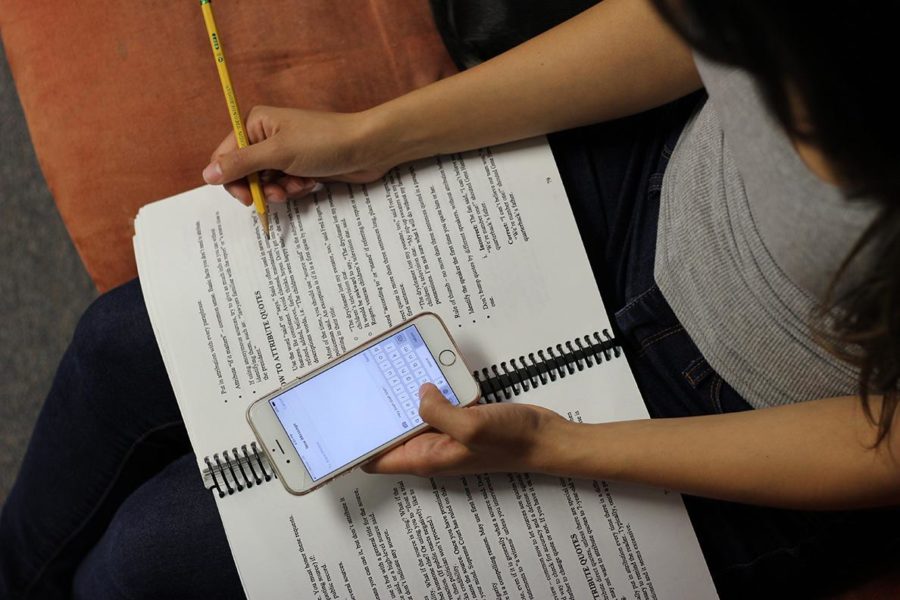I was standing behind two of my peers when I first heard “lol” used as an adjective. Shortly after, I found myself repeating the same lingo at a party in response to a story told by a drunken friend.
“Lol,” I said, forgetting to laugh.
“Lol” is more than a dismissive acronym. It now plays a definitive role in the convergence of today’s youth with technology. The boundary doesn’t begin here, nor does it end at work, on the bus, in the gym or at school. Dependency on smartphones transcends the essence of our humanity so completely that it’s nearly impossible to go anywhere in public without seeing one.
Modern society’s students are packing up their bags, leaving reality and travelling into cyber space to frolic among fiber optic connections to converse electronically.
The Pew Research Center named millennials “generation wired.” So who are we? Comprised of cyborg youngsters and metropolitan hipsters, the wired generation is a new breed with heads bowed down in reverence to our favorite toy.
The smartphone is an integral part of life. Not only is it a GPS, alarm clock, camera, calculator, weather oracle and social medium, it’s a cherished pastime and informant of the next party.
The productivity of the future work force, the presumably ‘studious’ university generation entrusted with solving the world’s innumerous problems, are surrendering their engagement in the present to their smartphones.
Smartphones, which could once be used in moderation for essential functions, are now synonymous with toys. Productivity becomes subjective in smartphone usage with the prominence of social media applications and the internet.
The increase in the use of smartphones for entertainment qualities rather than as a tool is at best distracting. Previous studies conceptualized electronic media as a “filler for unstructured time,” which often detracts from students’ performance and ability to multitask.
A recent Ohio State University study found students spend an average of three hours and 45 minutes engaging in electronic social interaction each day. Within this correlation is a strong negative association between social networking sites’ exposure per day and academic performance.
As the wired generation increasingly redefines the binding role of their smartphone from appliance to cherished friend, the relationship between user and phone seems to be a toxic one.
The negative association between electronic media usage and grades implies trouble for the easily distracted. For many, the temptation to fondle our little metal friends is significantly stronger than the desire to crack open a textbook and study for a test.
Contrary to Ohio State’s study, other examinations of smartphone use and higher education foresee a promising unity between the two. Marcelo Milrad and Daniel Spikol of Vaxjo University in Sweden believe “interactive multimedia and communication offer new possibilities for supporting innovative ways of learning.”
Milrad and Spikol conducted a control study of specialized smartphones designed to complement their university regime. They found students and instructors alike participated eagerly in both video and audio communication. They also found students were more expressive in their dictation, avoided SMS abbreviations’ like ‘lol’ and worked on producing complete sentences.
This medium of “multicasting” presents a more optimistic outlook of smartphones’ role in students’ lives that could unlock great potential for efficiency. The ability for the smartphone to transcend between pedagogical tool and personal life is a unique quality that could accommodate the various learning preferences of students.
Regardless of pending developments in technology, existing student users are forewarned of the academic dangers of lol-ing too frequently when school is in session.



